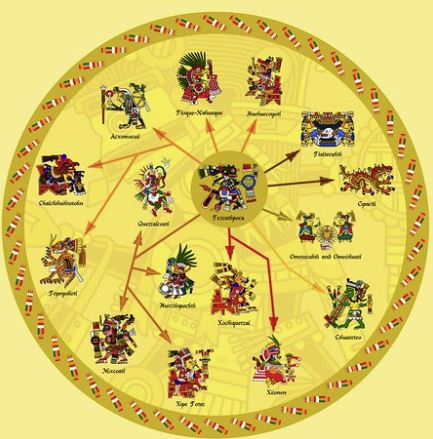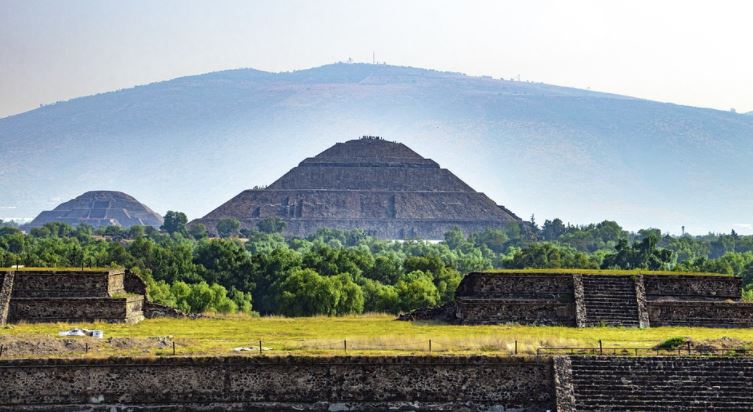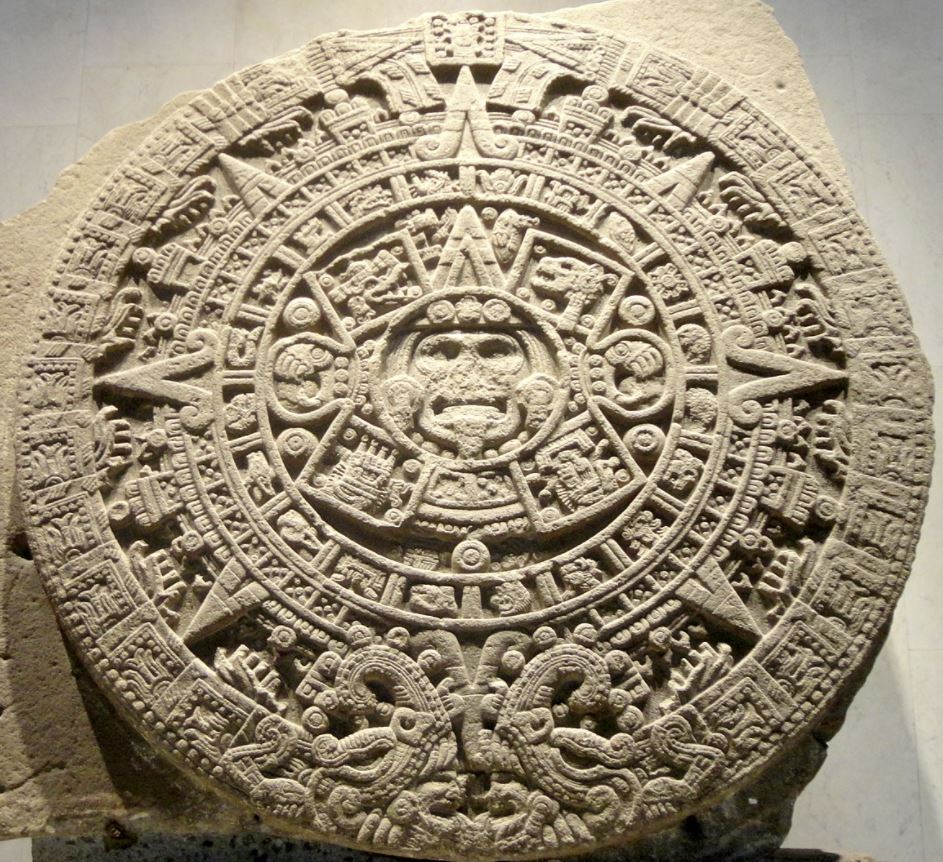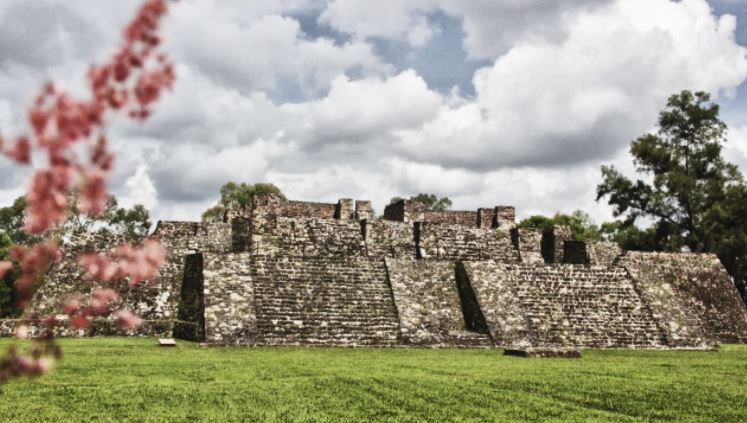All You Need To Know About The Ancient Aztec Gods and Goddesses
The Aztec religion was a particularly interesting religion that was developed in the central parts of Mexico approximately through the years 1300 and 1521.
The Aztecs had a strong connection to their deities and they performed multiple human sacrifices in order to keep them satisfied and for them to grant them their favor.
The number of ancient Aztec gods and goddesses is quite large, it easily reaches more than 100 deities, but of course, just like in many other pantheons, the vast majority of the deities are minor gods that do not have too much relevance.
List of ancient Aztec gods and goddesses
Among the most important Aztec gods and goddesses, we can find the Aztec god of war Huitzilopochtli, which was the chief god of the pantheon, and other relevant figures such as Quetzalcoatl, the god of the Vegetation or Tlaloc, which was the deity related to the rain.
Understanding the cosmology in the Aztec religion
In order to fully understand why the Aztec religion was like it was, we need to set the context right.
According to the Aztecs, the world was structured in three different parts: The earth world in which the humans lived, the underworlds or Mictlan, which was the land of the dead, and the upper plane in the sky which was impenetrable for humans.
The Aztec believed that life was structured in cycles of life, death, and rebirth, and thus, just like the Sun hid in the Mictlan at night and it rises to be reborn in the mornings in the earth world, both the humans and the Aztec gods and goddesses were also cyclical.
The Aztec believed that the underworld was formed by nine layers in which different deities and beings inhabited. Of course, this was not only the case with the Mictlan, as the sky had thirteen layers, but the upper was also the home of the Aztec god Ometeotl, and the lowest was the home to the god Tlaloc, the deity related to rain and water.
The Aztec temples
The cycles of life and death in Aztec religion
After they died, the souls of the humans could go to one of three different places: to the Mictlan, to the lowest layer of the sky, the home of the god Tlaloc or to the sun.
They believe that those warriors who died in battle and the woman who died in childbirth would transform into hummingbirds and accompanied the Sun in its cyclical journey.
Those who drowned would enter in the reign of the Aztec god of rain Tlaloc.
Those who died without glory would go to the underworld reign of Mictlan.
The task of the Aztec people was to continue the cycles of life
According to the Aztec people, they believed that both humans and gods had to sacrifice themselves in order to allow life to continue.
One of the most important myths surrounding Quetzalcoatl decided to steal the bones of the previous generation of humans that lived in the Underworld in order to make life continue. This myth is better explained here.
The Aztec Creation Myth: the fifth age and the blood sacrifices
According to the Aztec religion beliefs, the fifth age of the world began in the city of Teotihuacan when all the Aztec gods and goddesses had gathered themselves to create this age.
The world and the sun were already created but the star needed to be set in motion for history to begin. One of the gods, Tecuciztecatl, was supposed to sacrifice himself, but when the hour of truth came, he could not jump to the fire.
As an act of sacrifice, a god called Nanahuatzin decided to jump to the fire instead and caused the fifth and final sun to rise where the humans could live. This sacrifice was a call for humans to continue the cycle of life by sacrificing themselves.
However, Tecuciztecatl felt humiliated by his fellow god sacrifice and after all, he decided to jump to the fire too, becoming into the moon.
The Aztec sun stone
As a result of this myth, the Aztec people believed that blood sacrifices were needed to continue this cycle, that is the reason why they performed these acts that we could consider brutal and unnecessary. Of course, for them, these sacrifices and deaths were something normal.
The Aztec gods and goddesses were also paid with offerings of food, flowers, and any other valuable item for their society.
According to the Aztecs, the blood sacrifices fed the gods and kept the sun from falling, and the victim could be a slave, a prisoner of war, or even a member of society.
Aztec culture and religion in the society
Religion was a very important matter in Aztec society, just like we have already discussed.
On the state level, the religion was controlled by the Tlatoani, which was the counterpart of the king of the state, with the help of the high priests who governed the main temples dedicated to the Aztec gods and goddesses.
This involved large festivals and rituals that were centered around the ruler dynasty and attempted to stabilize the political and cosmic order.
Of course, these rituals included human sacrifices, and on some occasions, the victims were the Tlatoani too. Depending on the level of society, the victims of the sacrifices were different.
The most impacting ritual performed by the Aztec people was the New Fire ceremony, which was celebrated every 52 years and all the citizens of the reign gathered.
During this ceremony, the attendants would destroy house utensils, they would quench all the fires and they would receive new ones from the bonfire on top of Mount Huixachtlan, lit on the chest of a person who was sacrificed before.
The temple in Mount Huixachtlan
Other facts about Aztec religion and society
The Aztecs created a dedicated writing system in a language known as Nahuatl. Many creative pictures depicting different words, similar to Egyptian hieroglyphs, tell the tales of the incredible ancient Aztec Empire.
Three years after first arriving in Mexico, the Aztec Empire was conquered by the infamous Spanish conquistador, Hernan Cortes, who not only claimed Mexico for Spain but also played an essential role in the colonization of Cuba.
After Cortes captured Tenochtitlan, the religious conversions began soon thereafter. The Inquisition imposed Christianity and banned the Aztecs from practicing their native religion and worshipping their Aztec gods and goddesses
List of the ancient Aztec gods and goddesses
As we have already seen, the Aztec religion gods and goddesses would be pleased when blood sacrifices were made to them. However, that was not the only way to worship them correctly.
If you want to learn more about the many different Aztec gods and goddesses, take a look at this list of the most important ones.
| Name | God/Goddess Of | Power | Appearance | Role |
| Huitzilopochtli | War and Sun | Unmatchable Strenght | Man with Hummingbird Feathers | Chief God |
| Tezcatlipoca | Change | Grant Luck, Determine Destiny and Extraordinary Strenght | Man with the Form of a Jaguar | Supreme God |
| Quetzalcoatl | Vegetation | Flying and Change his form | Feathered Serpent | Creator God |
| Tlaloc | Rain, Water and Thunder | Control the Weather | Human man with fangs | Deity of the Weather |
| Xolotl | Monsters, Deformities and Misfortune | Enter and Exit the Underworld | Deformed Creature with Reversed Feet | Guide of the Sun |
| Chicomecoatl | Maize | Grant a Good Crop | Mature Woman | Matron of Agriculture |
| Xochiquetzal | Love and Eroticism | Seduction | Young Woman | Mother of the Corn God |
| Mictlantecuhtli | Death and Underworld | None | Skeleton with Red Spots | Lord of the Underworld |
| Mixcoatl | Hunt and Sky | Change Form, Great Skill with Bow and Arrow | Man with hunting tools | Hunter and Warrior |
| Chantico | Fire and Household | Deny Access to Strangers and Enemies | Woman with a Crown of Spikes | Protectress of the house |




